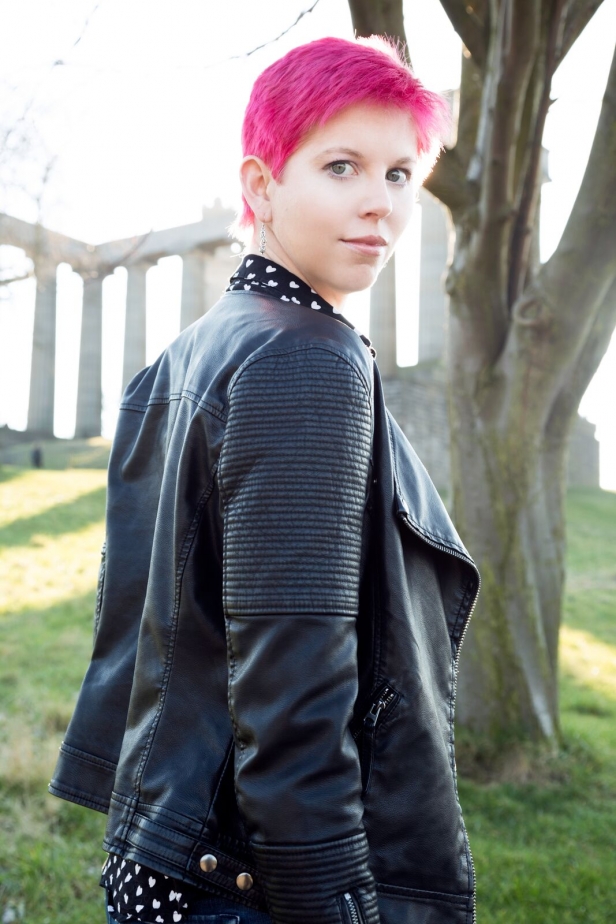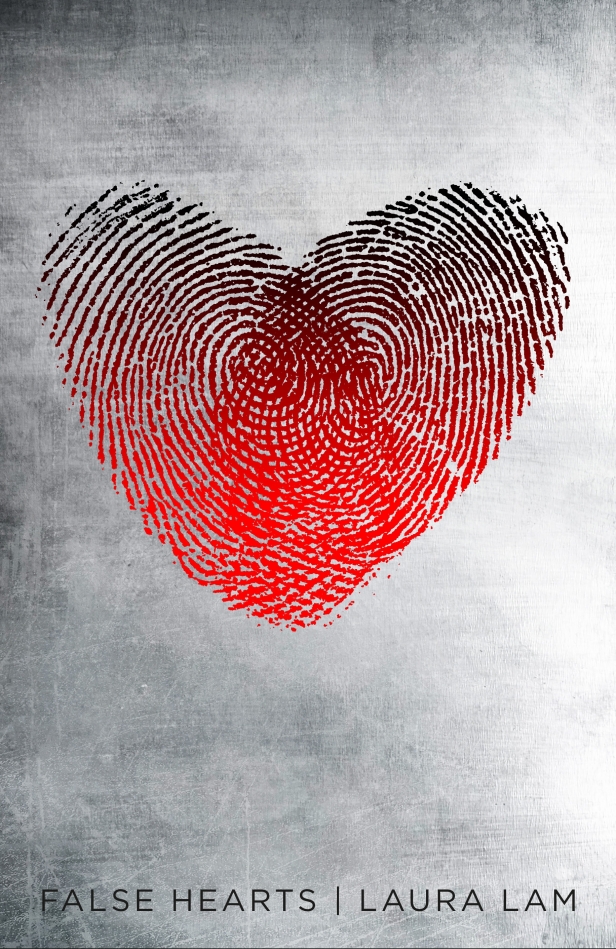Author Laura Lam garnered a passionate readership with her fantastic young adult Micah Grey series, but her new novel False Hearts sees her leap into a darker, more adult world of cults, dream manipulation and murder.
We had the chance to talk to Lam about the challenges and thrills of writing False Hearts, what the Micah Grey fandom means to her, her favourite authors, and SF’s best siblings.
How would you pitch False Hearts to a potential reader?
Orphan Black meets Inception. Outside of a near-future San Francisco, conjoined twins Taema and Tila are raised in a secluded cult called Mana’s Hearth. After escaping, they are pressured into being surgically separated and fitted with mechanical hearts. Ten years later, one twin, Tila, is accused of the first murder by a civilian in decades, and the police think she’s involved with the Ratel, an underground crime syndicate that deals in a dangerous new dream drug called Verve. Her sister Taema is given a proposition to go undercover as her sister to prove her innocence and save her life.
Do you remember what the first seed of the idea was?
One lunchtime, I read an io9 article about conjoined twins Violet and Daisy Hilton, who were famous vaudeville stars in the 20s. I started wondering what it would be like if you grew up conjoined to someone, unable to keep secrets because you were never alone. Even if you were separated, it’d be a very close bond. How much would it unnerve you if your literal other half hid something from you—like murder? How much would that eat you up? How desperate would you be to find out the truth? Everything followed from there.
Was it a challenge to write twins? I feel like there are probably all sorts of traps to fall into!
It was a fun challenge. I’ve previously written stories with siblings, but not with such an emphasis on the main plot. I observed my twin nephews a lot, and researched a lot about both identical twins and conjoined twins. I wanted to sidestep the trope of “good twin vs bad twin,” even if it may seem that way at first glance. I didn’t want them to be carbon copies of the other, either. I made sure they each had their own interests and motivations for their actions.
In your introduction you mention the research you did into cults and their portrayals, how important was that to your depiction?
It was fairly important as I took some details from the research. In my undergraduate degree, I also had a course on folk religion and magic, which delved into some cults as well and helped inform early ideas of Mana’s Hearth. Essentially, the Hearth is a 1960s hippie commune frozen in time, led by a succession of increasingly corrupt leaders, the Mana-Mas, for about 150 years. Hymns in the church are 1960s pop tunes, for instance. So I had some fun with it, but underneath the place is as sinister as all cults.
How big an adjustment was the shift from the gaslight fantasy of the Micah Grey books to False Hearts? Obviously there are still genre elements but it’s a very different world.
Perhaps not as big of an adjustment as it might first seem. There’s slightly less worldbuilding involved, as I can use existing places and historical events as a leaping point as I postulate my future. The Micah Grey books are in a secondary world, so I had to make up everything from scratch, though I used Victorian Scotland as inspiration for some aspects of the society. Pantomime, the first Micah Grey book, is also a slower-paced, coming of age tale, whereas False Hearts is a pacy thriller. I think my approach was largely the same, though: make the characters very clear in my mind, focus on their journey, make sure to think through all details of the world and make sure it’s believable for the reader.
You’ve got the third Micah Grey book, Masquerade, on the way next year. Has it been fun to go back and forth between the two?
It has! I wrote False Hearts when I wasn’t sure what was going on with the Micah Grey series—the first imprint that published the books had folded, so their fate was up in the air for a while and it was really difficult to work on the third book. At one point I thought it might never come out, or that I’d self-publish it. That’s another reason I changed genres—False Hearts felt different and out of my comfort zone, and I loved stretching my writing muscles in a different way. Once I finished False Hearts (and it sold!), I was rejuvenated to go back and finish Masquerade. In a happy turn of events, Macmillan bought my backlist too, and since then I’ve been bouncing between editing Masquerade, False Hearts, and drafting and editing Shattered Minds, the second thriller set in Pacifica. Changing genres for a bit ends up being a palette cleanser.
The Micah Grey books had a very strong positive reaction from readers who were thrilled to see an intersex character in YA. How has it been for you as an author to see a character you’ve created connect so strongly with people?
It’s been really wonderful. I’ve received reader mail that’s made me cry—saying that my books helped people come to terms with their sexuality or gender identity, or bolstered their courage to come out to friends and family. I had others say it was the first time they’d really seen themselves reflected in fiction. Other readers have told me that it helped them confront their own internal biases and they feel more open and accepting as a result. Those notes don’t appear often, but when they do, they brighten my whole day. Obviously not everyone likes every book, but it’s really affirming when you send a book out into the unknown and receive some echoes back of people who heard what you were trying to say. I hope False Hearts connects with people, too.
Which authors do you get most excited about?
Robin Hobb has been my favourite author since I was a teenager, and I’m so excited for the third book in the Fitz and the Fool trilogy I can’t take it. When I’m stressed or ill, I turn back to those books time and time again. When a new book of hers comes out, I drop EVERYTHING and sit and read feverishly until it’s done, then often go back and start it again to take my time. I also really like Margaret Atwood, Patrick Ness, Zen Cho, Tana French, Octavia Butler, Ursula K. Le Guin, Scott Lynch, and countless others. I read anything that looks good, whatever genre denomination.
Do you remember what your first experience of the genre was?
I was obsessed with fairy tales as a small child, forcing my parents to read them to me over and over again. Every Halloween I was either a fairy, a princess, or a fairy princess. My parents really encouraged me to go to the library or visit the bookmobile when it came to our neighbourhood, and I’d go in and grab whatever had an interesting cover and walk out with armfuls of books. Sci fi and fantasy usually had the coolest covers. I read a lot of Diane Duane as a kid, along with Animorphs and Goosebumps, Harry Potter, Anne McCaffrey, Mercedes Lackey, Tamora Pierce, and Terry Pratchett. Anything fantastical or set on a different planet and I was all for it.
Finally, do you have a favourite set of sci-fi siblings? (I was going to ask twins but worried that it would be too restrictive!)
I had to think about this for a bit, which made me sad. I feel like sibling bonds are underutilised in science fiction and fantasy for the most part. Most of my first thoughts are more fantasy: Fred and George Weasley, for instance. I like Simon and River Tam from Firefly. And, of course, every character played by Tatiana Maslany in Orphan Black. In The Fire Sermon by Francesca Haig, everyone is born a twin, one whole and one “maimed” in some way (alphas and betas). I’m keeping an eye out for more.
False Hearts by Laura Lam is published on 16th June by Pan Macmillan, price £12.99 in hardback.

